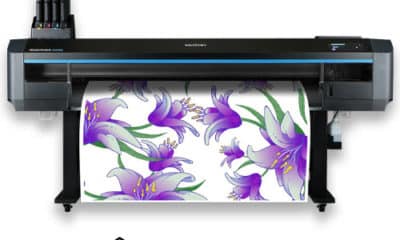LEDs + Lighting
LEDs, Are They Expensive or Inexpensive? Why or why not?
Overstatements can confuse expectations.
Published
13 years agoon
As president of LED Lighting Technologies, Dr. M. Nisa Khan consults in the solid-state lighting industry and educates consumers about LED lighting. She has a bachelor’s degree in physics and mathematics, and master’s and Ph.D. degrees in electrical engineering. Email her at nisa.khan@iem-asset.com
More and more, LED lamps have captured global attention in science, industry, government and the general population, as applications increasingly light up buildings, billboards, entertainment zones, signs, decorative lights and even television screens. The related excitement is so overpowering that, Samsung, a few years back, labeled one of its TV models as “LED TV,” but, frankly, the sets were mere LCD TVs with LED-based backlighting. Unfortunately, such overstatements often generate misleading expectations.
Many expect LED lamps will soon replace many everyday lamps, if not all of them. Others argue LEDs’ costs limit this predicted prevalence, but, in contrast, inexpensive – cheap — LED offers crowd the Internet.
So, are LED lamps too expensive?
The answer is yes and no. And, because reducing costs and energy consumption, and protecting natural resources is an imperative task for all, a grasp of the high costs’ underlying reasons is essential for LED manufacturers, resellers — and end users.
Core challenge
Currently, high-brightness and high-quality LED lamps are too expensive for wide-ranging use. At heart is the binning issue, which arises from the wide-ranging light and electrical characteristics produced from the same wafer during manufacturing, especially when compared to the much smaller (and accepted) variations experienced in other lamp-building technologies.
Such LED lamp variations result from a complex set of issues that encircle semiconductor-material growth, processing and fabrication, which also affects the interdependent optoelectronic and thermal properties.
The laborious process of consistently binning LED chips, with a required degree of light parameters for different applications, comprises large and expensive testing equipment and significant manual intervention. The latter is necessary to measure such light parameters as luminance, flux, color, directivity and power consumption. This complex gauging determines the suitable bin.
Also, because the parameters are temperature- and drive-current dependent (which also affect LEDs’ lifespans), these matters become more complicated. The solid-state lighting (SSL) industry’s standards group member — National Electrical Manufacturers Assn. (NEMA) — provides specific testing procedures for each parameter.
Compared to their electronic counterparts, semiconductor technology-based optical and lighting performances are subjected to notorious yields. A further actuality is the fundamentally different– and rarefied — science that underlies optoelectronic and electronic technologies. The divergence is because photons (light particles) have vastly (a factor of 1,000) larger wavelengths than electrons that function at the same energy level; hence, the materials’ imperfections, processes and fabrication affect light parameters much more than what manufacturers experience with electrical parameters.
Further, most electronic devices are digital and a binary decision is the only basic-level function from which other binary decisions follow, which produce, finally, many complex functions.
In contrast, most optical and lighting devices are analog and require many different types of light parameters to function simultaneously. An exception, however, is an indicator light’s binary function — the light merely needs to be “on” when a gadget is on. Further, the light’s color and intensity aren’t important as long as it’s visible and comfortable to the human eye. Therefore, LED indicator lights provide a basic, binary function. Because of this fundamental simplicity, they’re abundant, cheap and quite reliable.
AdvertisementBinning requirements
For high-end lighting applications, manufacturers carefully bin LED lamps to meet the required criteria. The object is to meet the light sources’ dual onset and lifespan demands.
Because numerous, same-batch chips fall below some requirement standards, manufacturers’ implement in-process, optical testing, to ensure accurate binning. The reject level may be up to 90%, so, clearly, such scrutiny increases the cost of high-quality LED lamps.
Note, however, that rejects aren’t discarded. Instead, they’re sold to many different vendors who package and sell them at discounted prices. These inexpensive, “reclaimed” LED lamps are likely to perform poorly and lack the lifetime claimed by an unscrupulous distributor.
To cite the cost of high-quality LED lamps, manufacturers must improve their lamps’ quality and life. Quality improvements require further material, fabrication and processing developments. Lifespan lengthens through performing more optical tests at the wafer level, rather than the die level, where the majority of the binning occurs today.
Wafer-level “step-and-repeat” testing is faster and less labor intensive.
Validation testing is important because LED lamps are temperature, drive-current and installation-configuration sensitive; thus, various supply-chain stages can affect the optical parameters.
AdvertisementCurrently, the tests commence with wafer probing, followed by testing bare and mounted dies, but it ends with packaged LEDs. However, I believe testing should continue after post-processors implant the lamps in displays, luminaires or other fixtures.
Finally, the end users — signmakers, for example — should also test lamps for optimal, light-source usage in the end environment.
Binning standards
LED chips are processed in the initial wafer, and then diced to the die stage, where they are sorted or binned (using such test equipment as integrating spheres and spectrophotometers) for light-output level and color parameters.
In truth, the industry awaits further specifications of NEMA binning standards; so, now, the selection process varies among manufacturers.
(NEMA did announce its first SSL standard on April 13. The SSL 3-2010 High-Power White LED Binning for General Illumination standard, produced by NEMA’s Solid State Lighting Section, provides standardized categorization areas [bins] for “white” LEDs used for general lighting.)
For many white LED lamps, which comprise blue LED chips and phosphors, such binning cannot be completed at the die stage, because phosphor is often added at the packaging stage. Part of the lens-encapsulation system, it occurs after the wire-bonded die is attached to a substrate or heat-sink material. Such binning-methods variances alter the cost of different manufacturers’ LEDs.
Along with flux, other deliberated, binning parameters comprise dominant wavelength, correlated color temperature (CCT), chromaticity and color-rendering index (CRI).
Ambiguity
Ambiguity also exists in lifetime’s testing. Because LEDs usually don’t fail catastrophically, as do standard incandescent lamps, lifetime rating predictions are problematic. Rather than determining the lifetime or output degradation, the IESNA-LM-80 standard defines certain lumen maintenance of LED lamps over time — when an LED lamp’s output will drop to 70% of its initial light output, for example.
Determining lifetime requires testing an LED lamp for up to 10,000 hours, at multiple temperatures, including 85°C (185º F).
As the industry matures, many of these binning tests, including lifetime testing, should move to the wafer level, where they’ll incorporate sophisticated sampling and equivalencies that essentially guarantee the same optical-parameter results as those lamps presently tested at die and packaged levels.
Such critical materials as phosphors and sapphire substrates also affect LED lamp costs. Some phosphor materials require rare-earth elements — yttrium, cerium, terbium and europium. The LED epitaxial growth method, known as MOCVD (Metal-Organic Chemical Vapor Deposition), also requires another critical material, trimethyl gallium, as metal-organic foundations. Although not all are expensive materials, the demands are rapidly increasing and, presently, the industry is experiencing a supplies shortage.
Critical-materials management is crucial to reducing LED cost; it also helps ensure an adequate supply for future needs.
Commitments
Although elemental differences exist between optoelectronics and electronics technologies, many of the material and testing challenges discussed here relate to what the electronics industry is also exploring.
Attribute the electronics triumph to vigorous competition among various companies. For example, the current, hottest, Smartphones include chips made by Qualcomm, Nvidia, Marvell and Intel, although the latter came in late. These companies battle for market share in the same way Intel battled Applied Micro Devices in the ’80s and ’90s, to, at that time, gain dominion over the personal-computer chip space.
Further, Samsung and Texas Instruments compete to improve processor speed, energy-efficiency and other performance facets that will produce the Smartphone market’s fastest application processor. Smartphones comprise a complex mix of operating-systems, communication and graphics functions – and yet we see rapidly spawned innovations satisfy the enormous market growth ($80 billion in 2010). Clearly, the committed players want substantially improved technologies and lower product costs and are willing to obtain this by first consigning substantial R&D and manufacturing costs.
These types of commitments were absent in the optoelectronics industry’s past and, now, also, appear only offstage in the LED lighting industry. Unquestionably, however, it’s a tougher bet to forge ahead with LED lighting – which isn’t nearly as exciting as Smartphones — and still a struggle to oust its salient incumbents – incandescent and fluorescent lamps in particular, for general lighting applications.
SPONSORED VIDEO
Introducing the Sign Industry Podcast
The Sign Industry Podcast is a platform for every sign person out there — from the old-timers who bent neon and hand-lettered boats to those venturing into new technologies — we want to get their stories out for everyone to hear. Come join us and listen to stories, learn tricks or techniques, and get insights of what’s to come. We are the world’s second oldest profession. The folks who started the world’s oldest profession needed a sign.
You may like
Advertisement
Subscribe

Magazine
Get the most important news
and business ideas from Signsofthetimes Magazine.
Advertisement
Most Popular
-

 Business Management1 week ago
Business Management1 week agoWhen Should Sign Companies Hire Salespeople or Fire Customers?
-

 Women in Signs1 week ago
Women in Signs1 week ago2024 Women in Signs Award Winners Excel in Diverse Roles
-

 True Tales2 weeks ago
True Tales2 weeks agoSign Company Asked to Train Outside Installers
-

 Editor's Note6 days ago
Editor's Note6 days agoWhy We Still Need the Women in Signs Award
-

 Maggie Harlow2 weeks ago
Maggie Harlow2 weeks agoThe Surprising Value Complaints Bring to Your Sign Company
-

 Line Time1 week ago
Line Time1 week agoOne Less Thing to Do for Sign Customers
-

 Product Buying + Technology7 days ago
Product Buying + Technology7 days agoADA Signs and More Uses for Engraving Machines
-

 News2 weeks ago
News2 weeks agoMUTOH Partners With Wasatch for RIP Software Package










